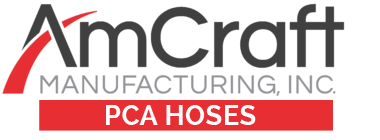In order to sustain safe temperatures for expensive and sensitive aeronautical equipment for all commercial and military aircraft, it’s important to have PCA hoses that prevent hotter or colder temperatures from damaging or disrupting the equipment. You should choose quality made PCA hoses using RF welding involved in the manufacturing process. RF welding effectively creates a strong, leak proof seal that keeps hoses from tearing or kinking when bent and used heavily, which means that a constant air temperature will flow through them. Here are some more specific ways to get the most out of commercial aircraft hoses.
Insulated PCA Hoses with Venting
In certain environments, commercial aircraft might be more susceptible to temperatures that cause condensation. When equipment comes into contact with condensation, it can begin to deteriorate. Vent ports located on the PCA hosing will remove excess water from the hose using interior air pressure. This keeps the hoses lighter as well, with no additional weight caused by water build-up, and is optimal for areas with a warmer and more humid climate.
Hoses with Rigid Ducts
One way to help prevent tearing and kinking in commercial aircraft hosing is to use rigid ducts. Rigid duct PCA hoses contain connectors and elbow joints that allow you to customize your hose arrangement which will help to resist tearing and puncturing. PCA hoses and connectors create a tight, leakproof seal and are ideal for eliminating the concern of air pressure drops and air leakage.
Special Connectors for Rigid or Flat Hoses
If you require a specific kind of connection for PCA hoses, many different connectors are available for different applications. Elbow, “Y” and starter sections—as well as convertors and dampers—can lay flat for storage, and are as durable as the hoses themselves. They can be easily used to alternate airflow, with many different sizes available depending on the commercial aircraft hose.
For a wide array of PCA hoses utilizing top quality RF welding, go with AmCraft for options that will give all passengers the comfort they want while maintaining safe equipment.
